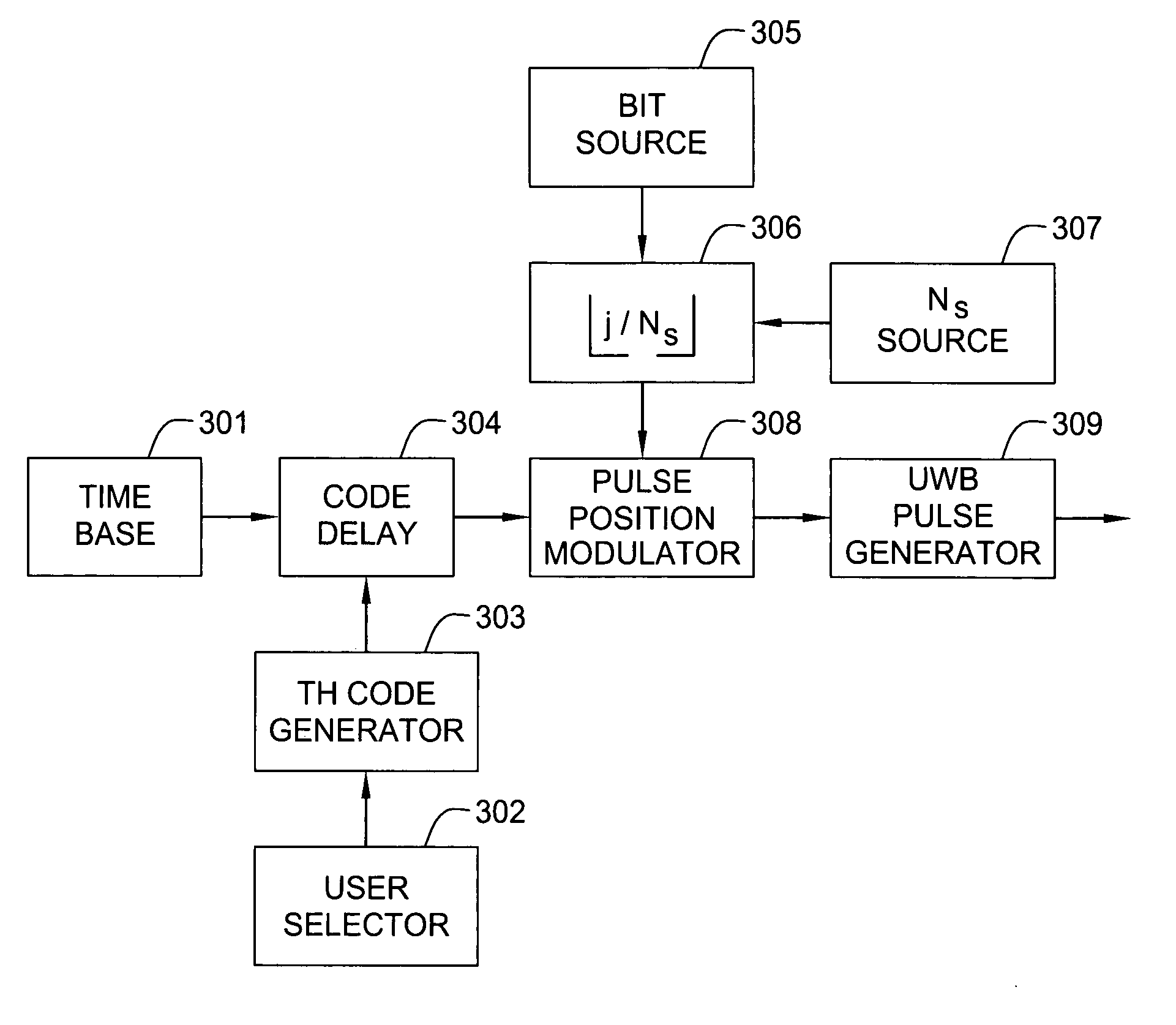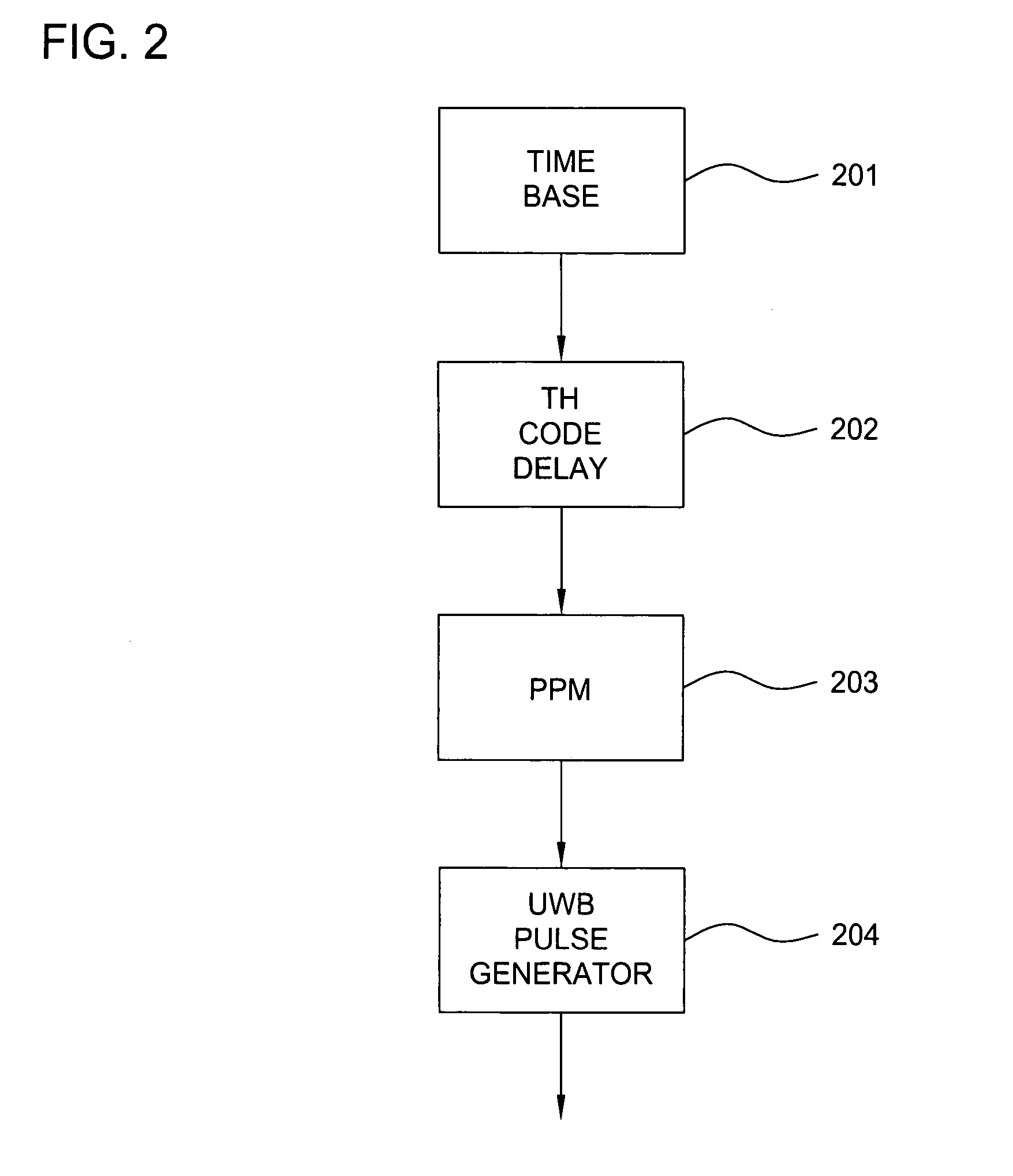Dynamic differentiated link adaptation for ultra-wideband communication system
a dynamic differentiation and link adaptation technology, applied in pulse position modulation, pulse frequency/rate modulation, pulse technique, etc., can solve the problem of reducing the maximum data rate achievable for the system, and achieve the effect of low system complexity
- Summary
- Abstract
- Description
- Claims
- Application Information
AI Technical Summary
Benefits of technology
Problems solved by technology
Method used
Image
Examples
Embodiment Construction
[0020] In the description that follows, certain terms are used interchangeably. The term “user” is interchanged with the terms “mobile”, “mobile station”, and “mobile user”. The term “base station” is also used interchangeably with the term “base”. These usages are not intended to be limiting in any way.
[0021] The present invention involves dynamic adaptation of the number of pulses per symbol (bit) for each UWB radio link. Since each link can be changed adapted independently from the other user links, it is possible to differentiate the adaptation for each of the links. Dynamically differentiated link adapted UWB has no restrictions on its application among different users and the adaptation can be performed independently for each user assigning the data rate desired for each case. This feature allows differentiation for quality of service for different users.
[0022]FIG. 1 shows a simplified system diagram for a typical wireless communication network 100. Wireless communication ne...
PUM
 Login to View More
Login to View More Abstract
Description
Claims
Application Information
 Login to View More
Login to View More - R&D
- Intellectual Property
- Life Sciences
- Materials
- Tech Scout
- Unparalleled Data Quality
- Higher Quality Content
- 60% Fewer Hallucinations
Browse by: Latest US Patents, China's latest patents, Technical Efficacy Thesaurus, Application Domain, Technology Topic, Popular Technical Reports.
© 2025 PatSnap. All rights reserved.Legal|Privacy policy|Modern Slavery Act Transparency Statement|Sitemap|About US| Contact US: help@patsnap.com



